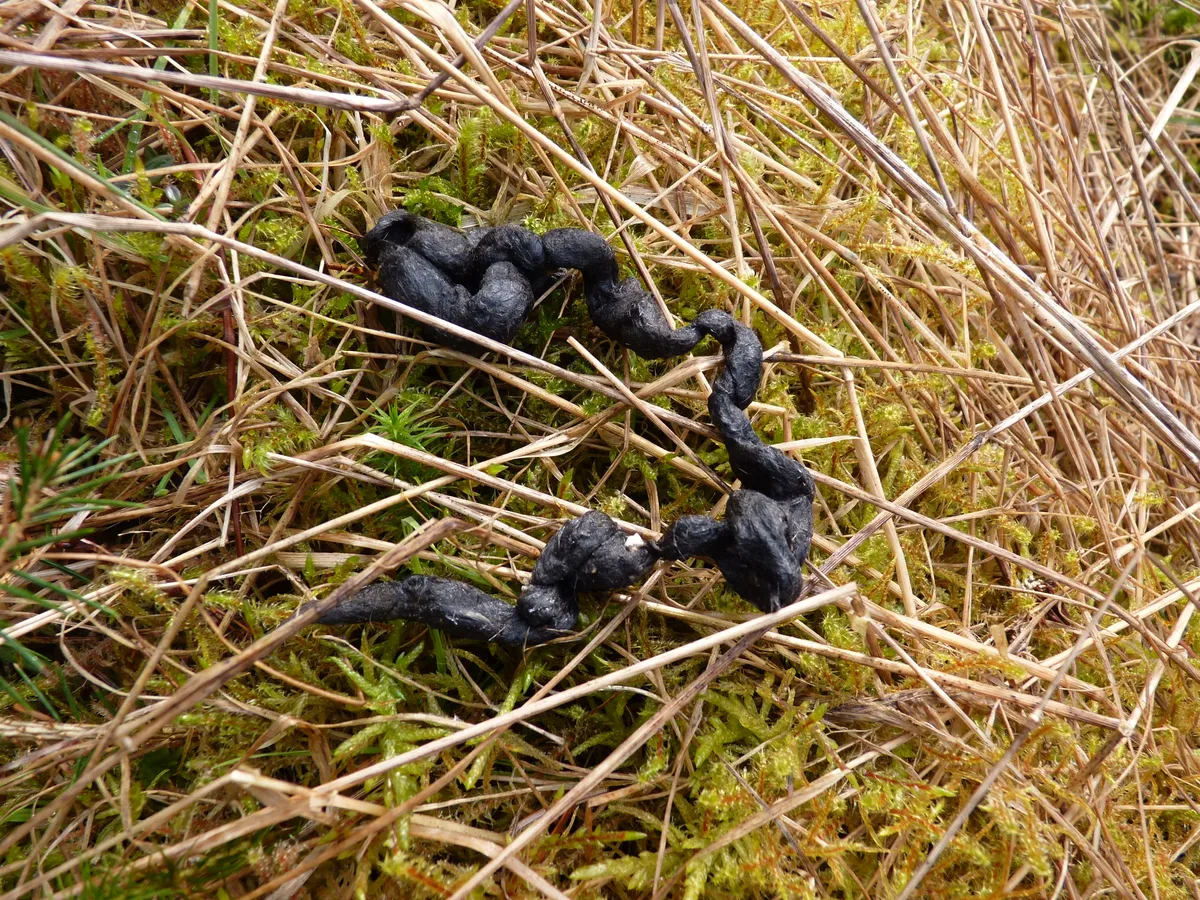The pine marten is one of Britain’s rarest carnivores. It is a native mammal that plays an integral role in a healthy, balanced woodland ecosystem. It is also a symbol of resilience and recovery. Find out more in this expert guide from the Vincent Wildlife Trust.
What is a pine marten?
The pine marten (Martes martes) is a mustelid and a member of the weasel family. In Britain, the marten’s family members include the stoat, weasel, polecat, otter and badger.
Other mustelids include wolverines and honey badgers.
Please note that external videos may contain ads:
The pine marten's scientific name, Martes martes, is an example of a tautonym, where the genus and specific name are the same.
What do pine martens look like?

A pine marten is comparable in size to the average domestic cat. Its heart-shaped face, big brown eyes, slim sinuous body, rich chestnut-brown coat turning darker in summer, flamboyant apricot-coloured bib and long tail, bushy in winter, help distinguish it from its mustelid cousins.
In Europe, the pine marten is sometimes confused with the beech marten (Martes foina). The beech marten, also known as the stone marten, is smaller but similar in appearance.
What is the geographical range of pine martens?
The pine marten is found across much of Europe, from Ireland to Russia. It is also resident in parts of the Middle East.
Which habitats are pine martens found in?
Pine martens like three-dimensional habitats in which they use their adept climbing skills to find food and avoid predation. These arboreal gymnasts prefer diverse woodland habitat with old trees and a well-developed ground and shrub layer. Tree cavities are used as denning sites.

Martens, however, are very adaptable and if woodland is scarce or unsuitable, the animals will occupy cliffs, crags, rocky mountainsides and occasionally the roof space of buildings.
Pine martens rarely excavate their own dens. Instead, they prefer to use a range of woodland structures. As well as tree cavities, they will den in squirrel dreys, windthrow, up-turned root plates and rock faces. Above ground sites are essential in areas where fox predation is likely. In the absence of natural structures, they are happy to occupy large bird boxes, purpose-built den boxes and even old buildings.
What is the average litter size for pine martens?
The pine marten is a slow breeder, with females not usually sexually mature until their third year. Breeding takes place once a year, with one to three kits born in the spring.
The kits will emerge from the breeding den around mid-June and are independent at about six months old. A marten in the wild will rarely live beyond ten years and less than five years is a more likely life expectancy.
What do pine martens eat?
The omnivorous marten will eat what is plentiful: in Britain, small mammals make up at least 40% of their diet. In summer and autumn, they are very dependent on fruiting trees and shrubs such as rowan, cherry and hazel, with fruit constituting around 30% of their diet.
Martens will take birds and their eggs but, as an opportunist, they will eat what is common. They also have the beneficial effect of predating jays, magpies and other corvids − themselves efficient predators of songbirds. Predation is of course a natural process, and is key to a healthy, balanced ecosystem.
Can pine martens control grey squirrels?
For millennia, the pine marten and red squirrel have evolved together across Europe in a natural predator/prey relationship. Studies in Britain and Ireland, however, have highlighted a low occurrence of red squirrel in the pine marten’s diet.
Research in Ireland by Dr Emma Sheehy and colleagues, and a follow up study by Sheehy and the University of Aberdeen, have suggested that where the pine marten is naturally recovering its former range, grey squirrel numbers are decreasing, allowing recolonisation of woodlands by the red squirrel.
The mechanism behind this relationship remains unclear, and further research is required to understand the dynamic between the three species. For now, as to whether the pine marten will act as a biological control for grey squirrels in Britain, the jury must remain out.
Are pine martens endangered?
Across Europe, the IUCN considers the pine marten population to be stable and of ‘Least Concern’. In Britain, the story is very different and the species is fully protected under Schedule 5 of the 1981 Wildlife and Countryside Act.

As a result of this protection, the Scottish marten population is now expanding its range and size, and further south, viable pine marten populations in suitable parts of England and Wales are becoming a reality.
Why did pine martens decline in Britain?
In the ancient forests that once blanketed Britain, the pine marten was both widespread and common. By the turn of the 20th century, however, the story was quite different.
Centuries of woodland clearance, the demand by furriers for marten pelts, and predator control, particularly by highly efficient Victorian gamekeepers, had called time on the pine marten across much of Britain. Just tiny remnant populations remained in remote areas in Wales and northern England.
In Scotland, the marten’s fortunes fared better. Pressures were less across much of Scotland and the pine marten stayed safe in the North West Highlands.
What is being done to help pine martens in Britain?
Aided by legal protection, the relict marten population in Scotland is on the resurgence, with martens now widespread north of the Central Belt, a number of populations across southern Scotland and signs of a spread over the border into England.
In England and Wales, the species was showing few signs of natural recovery from its early 20th century nadir and it was clear to conservationists that intervention was necessary to avoid extirpation.
In Wales, a pine marten recovery project led by Vincent Wildlife Trust has restored a viable population of martens to the forests of mid-Wales. In 2016, three females gave birth to kits, having been translocated to Wales in 2015.
In England, a small marten population is now surviving in Shropshire, and 2019 saw the start of a reintroduction of the pine marten to the Forest of Dean, led by Gloucestershire Wildlife Trust. In suitable areas of England, including the south-west, other reintroductions are being considered.
In 2017, the first footage of a living pine marten in Yorkshire for 35 years was taken, and in 2018, conservationists captured footage of a pine marten in Northumberland, proving that the mammal had returned to the forests.
Can I introduce pine martens to a wood near me?
The size of a marten’s home range varies widely according to the habitat. In Britain, a single male home range can vary from 33km² in upland spruce to 3km² in more productive, lowland woodland. Females will range from 10km² to just under 1km² in these habitats.
This means that many woodlands will not be large enough to sustain sufficient numbers of pine martens to maintain a viable breeding population.
Any proposed translocation of pine martens must be considered very carefully and comply with IUCN guidelines on translocations, whether for reintroduction or reinforcement (re-stocking). The importance of animal welfare and health screening is emphasised in these guidelines, as is the requirement for a detailed ecological assessment.
How easy is it to see a pine marten in the wild?
Pine martens are mainly nocturnal, live at low density and are largely solitary. As a result, they are very difficult to see. The animals will only interact with each other during the mating season − and they will not tolerate another pine marten in their territory.
In areas where martens are present, their characteristically curled and cylindrical-shaped droppings, known as scats, can sometimes be spotted. Scats are deposited in prominent places along woodland tracks to mark a marten’s territory.

The scats are usually black and often have a distinctive sweet aroma, but the smell and colour are both influenced by this omnivore’s varied diet.
Where are the best places to see pine martens?
In Britain, the best place to see pine martens currently is in Scotland. There are several wildlife hides in Scotland where pine martens visit, and numerous holiday cottages and B&Bs where pine martens are attracted to feeding stations.

In England and Wales, the numbers are still too low to have much chance of spotting a pine marten, but a growing number of B&Bs in Wales are setting up their own feeding spots.
What should I do if I see a pine marten?
If you see a pine marten in England or Wales, you can report it to Vincent Wildlife Trust. If possible, please try and take a photograph or video. If you’re in Scotland, the local biological records centre, will be interested in receiving your record.
Test your mustelid ID skills with the BBC Wildlife quiz:
The Vincent Wildlife Trust is a wildlife charity focusing on mammal research and conservation in Britain and Ireland. Increasingly, the Trust also works in mainland Europe.
Main image: Pine marten. © Robert Cruickshanks

